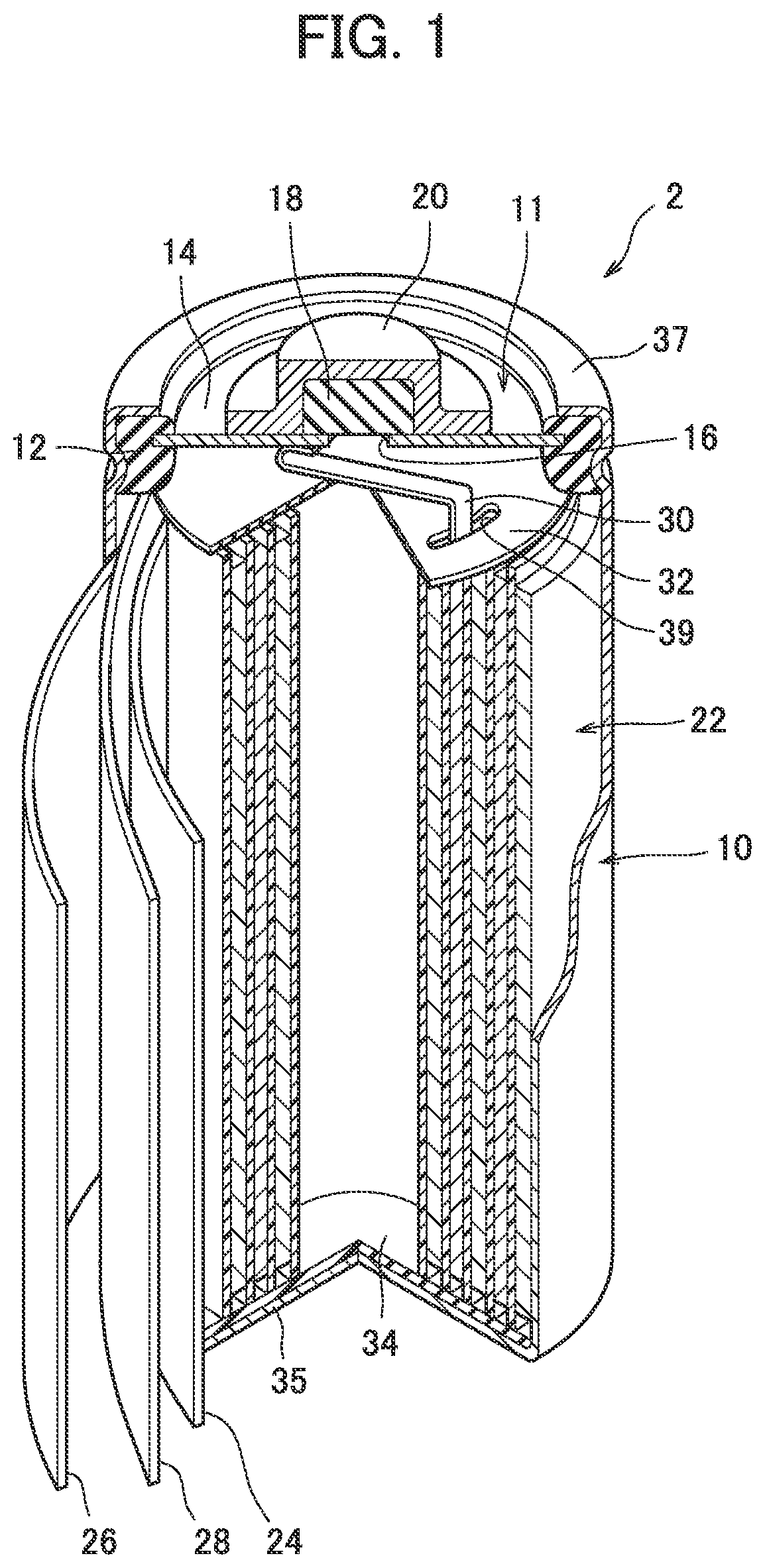Positive electrode for alkaline secondary battery, and alkaline secondary battery
a secondary battery and positive electrode technology, applied in the direction of positive electrodes, cell components, nickel accumulators, etc., can solve the problems of self-discharge, non-user-friendly batteries, and reduced battery remaining capacity,
- Summary
- Abstract
- Description
- Claims
- Application Information
AI Technical Summary
Benefits of technology
Problems solved by technology
Method used
Image
Examples
example 1
[0048](1) Production of Negative Electrode
[0049]First, a rare-earth component including 20% by mass of La and 80% by mass of Sm was prepared. The resulting rare-earth component, Mg, Ni, and Al were weighed to prepare a mixture so that the molar ratio thereof was 0.99:0.01:3.25:0.25. The resulting mixture was molten in an induction melting furnace, and a molten product was poured into a mold and thereafter cooled to room temperature, thereby providing an ingot of a hydrogen storage alloy. A sample was collected from the ingot, and subjected to compositional analysis according to an inductivity coupled plasma optical emission spectrometric method (ICP). As a result, the composition of the hydrogen storage alloy was (La0.20Sm0.80)0.99Mg0.01Ni3.25Al0.25.
[0050]Next, the ingot was subjected to a heat treatment involving retention under an argon gas atmosphere at a temperature of 1000° C. for 10 hours. After the heat treatment, the ingot of the hydrogen storage alloy cooled to room tempera...
example 2
[0067]A nickel-hydrogen secondary battery was assembled in the same manner as in Example 1 except that the amount of the sodium-containing high-valent cobalt compound powder added was 1.0 part by mass.
example 3
[0068]A nickel-hydrogen secondary battery was assembled in the same manner as in Example 1 except that the amount of the sodium-containing high-valent cobalt compound powder added was 1.5 parts by mass.
PUM
| Property | Measurement | Unit |
|---|---|---|
| temperature | aaaaa | aaaaa |
| volume average particle size | aaaaa | aaaaa |
| thickness | aaaaa | aaaaa |
Abstract
Description
Claims
Application Information
 Login to View More
Login to View More - R&D
- Intellectual Property
- Life Sciences
- Materials
- Tech Scout
- Unparalleled Data Quality
- Higher Quality Content
- 60% Fewer Hallucinations
Browse by: Latest US Patents, China's latest patents, Technical Efficacy Thesaurus, Application Domain, Technology Topic, Popular Technical Reports.
© 2025 PatSnap. All rights reserved.Legal|Privacy policy|Modern Slavery Act Transparency Statement|Sitemap|About US| Contact US: help@patsnap.com


